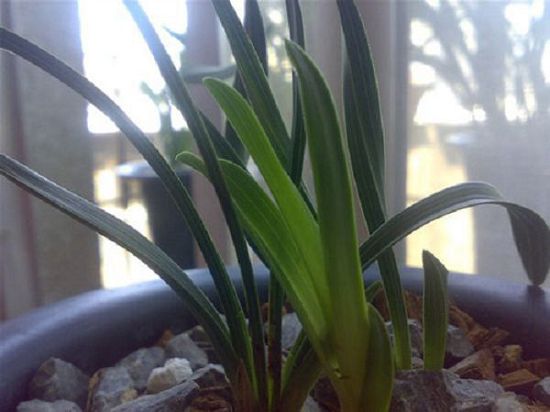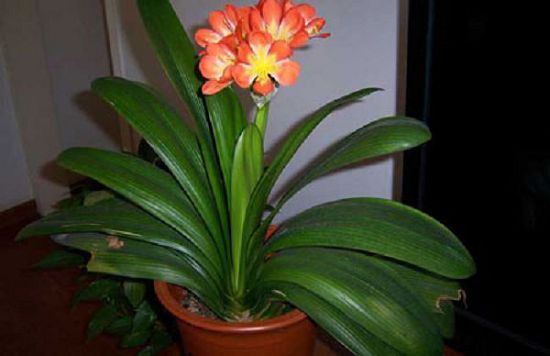Soilless cultivation techniques of Orchid

National orchid soilless cultivation is the most popular cultivation method in the world in recent years. The plant material used in soilless cultivation is light, does not carry bacteria and insects, and will not splash sediment and pollute the environment because of watering and fertilization. Moreover, the plant material of soilless orchid is particularly rough, hydrophobic and breathable, which can effectively avoid root rot caused by waterlogging. Therefore, the orchid plants cultivated by soilless cultivation have strong roots, strong growth, few diseases and insect pests, thickening of old leaves, short and wide new leaves, no withering and yellow leaves, high germination rate and high flowering rate. It can be displayed not only indoors but also outdoors.
First, plant materials.
The plant materials of soilless cultivation of Cymbidium can be divided into two categories: organic plant and inorganic plant.
1. There are two kinds of organic plants: hard plants such as snake sawdust, decaying bark and soft plants such as charcoal, grain bark, water moss and coconut bran. Organic plant materials are generally washed with clean water and exposed to the hot sun outdoors or sterilized with steam for 2 hours. they can also be soaked in 5% lime water for 24 hours, then rinsed and dried.
2. Inorganic plant materials can be divided into three types: ⑴ sandstone: volcanic stone, wind fossil, high phosphate stone, sea pumice, vermiculite, perlite, coarse river sand, small pebbles on the beach and so on. ⑵ calcinations: hollow ceramsite, tile fragments, ceramic kiln soil particles, etc. ⑶ plastics: foamed plastic blocks, foamed plastic tendons. Inorganic plant materials generally do not need any disinfection, only rinse with clean water to remove dust. However, fire-calcined plants should be soaked in water for 24 hours to remove the heat.
Soilless plant material has low moisturizing performance, does not have high nutrients, is easy to lose water and fertilizer, and is easy to cause poor growth. the hard weight of some soilless plants often hinders the growth of orchid root. Therefore, soilless plants need to be properly prepared. The general formula is 70% inorganic plant material and 30% organic plant material. In addition, all organic plants can be used, and the specific formula is 30% of trees, 10% of stems and leaves, 10% of waste residue, 10% of seed shells and 40% of carbon.
Second, water management.
In terms of water quality, the water for watering orchids should be clean and cool, and the pH value of 5.2-6.5 is the most suitable. Cities usually use tap water for two days. The substrate of soilless culture is generally poor in water retention. In the aspect of cultivation and management, in order to promote the growth of national orchid, it is necessary to supply more water many times a day. The amount of watering varies according to season, air temperature, sunshine, physical properties of the medium and air volume. When the light is strong, the wind volume is large, the humidity is low and the temperature is high, the orchid plant itself needs a lot of water, so it should be watered once in the morning and evening, and keep the leaves dry immediately after watering, so as not to leave water droplets on the leaves. Otherwise, the leaf or leaf tip will be scorched. Even if the national orchid is cold and dormant in winter, it should be watered once a day; in early winter and late spring, it should be watered once in the morning and evening every day; in the growing period of midsummer and golden autumn, it should be watered once in the morning, in the evening, and often sprayed on the ground and leaves to improve humidity.
Third, fertilizer management.
Orchid soilless cultivation generally uses inorganic fertilizer, mainly nitrogen fertilizer, phosphate fertilizer and potassium fertilizer, as well as some compound fertilizer. Nowadays, more orchid farmers use magic fertilizer and Haokangduo. Magic fertilizer is a long-term slow-release and safe solid granular fertilizer, which can automatically control the fertilizer content. The fertilizer effect can be as long as two years after one application. The ratio of nitrogen, phosphorus, potassium and magnesium is 6-40-40-6-15. Haokangduo is a kind of long-term multi-functional compound fertilizer, which is made of high unit compound grain fertilizer coated with special resin. The ratio of nitrogen, phosphorus and potassium is 14:12:14. There are two ways of fertilization: base fertilizer and topdressing. The fertilizer used in the base fertilizer can be magic fertilizer and Haokangduo, and a certain amount of fertilizer can be applied according to the instructions on the fertilizer manual when the orchid is put on the pot. Magic fertilizer is generally 5 grams / 4 inch basin, Haokangduo is generally 3-3.5 grams / 5 inch basin, usually combined with foliar fertilizer spraying, the effect is better. Topdressing can be divided into root application and extra-root fertilization. Root application can be applied three times a month and can be applied from April to November. Extra-root fertilization, that is, foliar spraying, this method is scientific, simple, low cost, can avoid root burning, and the effect is remarkable. The more effective formula is 1 gram of urea and 1 gram of potassium dihydrogen phosphate, mixed with 2000 times of water, and sprayed to the leaves after being fully dissolved. Now the better ones in production are American-made Huabao, which can be sprayed on Huabao 1-5 according to different periods of orchid growth. Foliar spraying must follow the principle of frequent application of thin fertilizer.
Matters needing attention in the use of fertilizers:
The main results are as follows: 1. Guolan can be fertilized in spring, summer and autumn, but not in dormant period in winter.
2. Adhere to the principle of applying thin fertilizer frequently and avoid applying thick fertilizer to avoid burning roots and injuring seedlings. When applying fertilizer, it shall be in accordance with the proportion in the fertilizer manual.
3. The ratio of demand for nitrogen, phosphorus and potassium in different growth stages is as follows: seedling stage, flowering stage and flowering stage. The suitable temperature for fertilization is 18-25 ℃. Fertilization is usually carried out in the evening. Foliar fertilizer should be carried out around 9 o'clock in the morning.
Related
- Is the orchid suitable for indoor use? Is it good for the body?
- How to prevent the empty root of orchids?
- What to do after the crab claw orchid is withered?
- Why are the leaves of orchids always yellow? Fertilizing and watering.
- Can the root of the gentleman orchid be saved if it is rotten?
- Diagnosis and treatment of cotton-blowing beetle insects in Cymbidium
- There is a way for a gentleman's orchid to rot.
- What is the most suitable temperature and humidity for the orchid?
- How to raise a gentleman's orchid? Cultivation techniques of Cymbidium
- How to prepare the nutritive soil for the cultivation of Cymbidium



